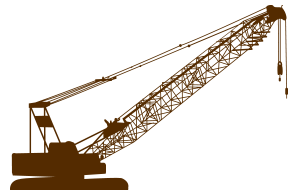You May Be Doing Construction Work
Understanding OSHA: Construction May Be More Common Than You Think!
June 2017—OSHA’s new crane rule, 29 CFR 1926 Subpart CC, applies to cranes and derricks used in construction. While maintenance activities typically fall under “general industry,” which is regulated by 29 CFR 1910, the lines between “construction,” “general industry,” and “maintenance” are not always clear. Some activities that may seem at first to be “maintenance” are frequently considered by OSHA to be “construction.”
First thing to note is that OSHA defines construction as “work for construction, alteration, and/or repair, including painting and decorating.” Another frequent surprise is in the delivery of construction materials. While this is typically classified as “general industry,” if a crane facilitates a construction activity while delivering materials, then that is considered “construction” and Subpart CC rules apply—including, starting November 10, 2017, the requirement for crane operators operating equipment with a capacity of more than 2,000 lb. to be certified.
Propane Delivery
An example would be delivery of a propane tank to a job site. If a crane is used to hoist the propane tank from a truck bed and setting it on the ground in no particular location, then that’s considered “general industry”; however, if a crane is used to set the propane tank on a concrete pad, in an excavation, or another location specifically for installation, then that is considered “construction.”
Another example would be hoisting roof trusses from a truck bed and setting the trusses on the ground in no specific location, which would be considered “material delivery” and would thus fall under the general industry rules. On the other hand, if the crane is used to hoist the trusses and hold them in position while workers attach them to a structure, then that’s “construction.”
Further, OSHA also states that “construction work is not limited to new construction; it also includes repair of existing facilities and the replacement of structures and their components.” Therefore, maintenance can be considered construction under certain circumstances. One must consider the scope of work, the complexity of the project, and whether it’s a replacement or an improvement.
Finally, OSHA specifies that “…where an activity cannot be easily classified as construction or maintenance, even when measured against the above factors, the activity should be classified so as to allow application of the more protective 1910 or 1926 standard, depending on the hazard.”
The moral of this OSHA tale? If in doubt, make sure you’re certified!
The above article is reprinted with permission from the NCCCO. Their original article can be found at: https://nccco.org/nccco/news-center/archived-press-releases/news/2017/06/07/understanding-osha-construction-may-be-more-common-than-you-think!
